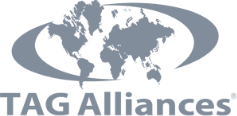COVID-19 – FURLOUGH LEAVE – 31 March 2020
As a response to the 2019 novel coronavirus disease (COVID-19) pandemic, the UK Government is implementing the Coronavirus Job Retention Scheme (“the Scheme”). It provides temporary assistance to employers whose operations have been severely affected by coronavirus.
The Scheme introduces the concept of furlough leave. Furlough leave is a period of leave during which the employee is not required to work. During this time, employers can recover a proportion of the employee’s pay from HMRC through a grant, thereby alleviating the pressure to pay full wages during the crisis period.
If eligible, employers will receive a grant from HMRC to cover 80% of the employee’s regular wage or £2,500, whichever is lower. Associated National Insurance contributions and minimum automatic pension contributions can also be claimed.
Government guidance on claiming through the Scheme was published on 26 March 2020 and can be found at:-https://www.gov.uk/guidance/claim-for-wage-costs-through-the-coronavirus-job-retention-scheme
Key aspects from the HMRC guidance:-
- The Scheme is not available where an employee continues to work (including reduced hours) or simply works from home;
- The Scheme allows backdating to 1 March 2020 and currently will last until 31 May 2020 (with a possible extension after review);
- The minimum length an employee can be “furloughed” for is three weeks;
- Employers may choose to “top up” the employee’s salary beyond the 80% grant but are not obligated to do so. Any additional top up will not be funded through the Scheme;
- An employee’s fees, commission and bonus payments will not be included in any payment under the Scheme;
- Holiday entitlement will continue to accrue for furloughed employees;
- Employees on unpaid leave cannot be furloughed, unless they were placed on unpaid leave after 28 February 2020;
- Employees who are on sick leave / self-isolating should be paid SSP but can be furloughed after this;
- Employees cannot engage in revenue generating work for the organisation whilst on furlough. They may take part in volunteer work or training (subject to conditions).
Who can claim under the Scheme?
The Scheme is open to all UK employers with a PAYE payroll scheme on or before 28 February 2020. Any organisation with employees can apply including; businesses, charities, recruitment agencies etc. The organisation must also have a UK bank account. If a company is in administration, the administrator will be able to access Scheme.
The Scheme applies to any employee employed as at 28 February 2020 – whether full time, part-time, on a zero hours contract or an employed agency worker (if they are part of their employer’s PAYE system). Employees engaged after 28 February 2020 are not eligible under the Scheme.
Furlough or redundancy?
The Scheme appears to cover employers who otherwise would have engaged in lay-offs or redundancies as a result of the crisis. Therefore it may be currently unreasonable for an employer to dismiss on the basis of redundancy if the Scheme is available as an alternative. This is particularly so for larger organisations with significant cash reserves.
The primary factor in the first instance is likely to be cash flow. If an employer cannot reasonably be expected to pay 80% of salaries until the HMRC portal is functioning then it may be reasonable to dismiss, as long as alternatives have been considered e.g. asking employees to defer their furlough salary.
How to identify employees to be “furloughed”?
Changing an employee’s status remains subject to existing employment law. Depending on the employment contract it may be subject to negotiation. Employers may firstly consider asking employees to volunteer for furlough leave. However, it should be made clear that there are no guarantees that particular individuals will be selected.
It will be crucial to engage in honest discussions with staff regarding the Scheme. Changes to employment contracts should be made by agreement (and preferably in writing) and employers are advised to obtain bespoke legal advice before making any such changes. It is important that any commitments made in the furlough agreement are made subject to future Government guidance or legislation.
In selecting staff, it is advisable for employers to use an objective selection matrix e.g. productivity records or a manager’s score based on relevant skills. This will provide justification and a defence to claims that the employer has targeted a certain type of employee.
Employers are advised to write to employees confirming they have been selected for furlough leave. A record should be kept of this communication along with any employee response, e.g. their consent to the selection.
Dealing with friction as a result of furloughing
Employers may face industrial relations issues as a result of furloughing employees. To illustrate, an individual who has not been selected for furlough leave may object to a potentially higher volume of work for only 20% more pay than a furloughed employee. Employers will have latitude in how they respond to this; they may wish to offer a bonus, or additional holidays to those that are not selected.
In terms of rotating employees on furlough leave, employers can do this provided that each individual employee is off for a period of at least three weeks at a time. This may assist to ensure no employee feels that they have been denied the opportunity to take furlough leave.
Elderly employees can likely be prioritised for furlough leave. Whilst this could be viewed as direct discrimination on the basis of age, in the current, unprecedented context of clear public health advice, it’s likely to engage the defence of being a proportionate means of achieving a legitimate aim.
Topping-up
Employers are not obligated to top-up pay to 100% of an employee’s normal salary. Indeed, in the context of cash flow difficulties, the employer may well choose not to. In this instance the employer should agree with each employee that salary will be reduced by 20% whilst the employee is furloughed.
For employees whose pay varies, the employer can claim for the higher of:-
- the same month’s earning from the previous year (e.g earnings from March 2019); or
- average monthly earnings in the 2019-20 tax year (other rules apply for employees who started more recently).
Making a claim under the Scheme
Claims can only be submitted once every three weeks. Claims can be backdated to 1 March 2020 if applicable. HMRC will receive the claim and if eligibility is satisfied then payment will be made by BACS to the employer’s UK bank account.
Employees must be paid all of the grant amount received for their gross pay, no fees can be deducted.
To claim, employers will need:-
- ePAYE reference number
- number of employees being furloughed
- claim period (start and end date)
- amount claimed (per the minimum length of furloughing of 3 weeks)
- bank account number and sort code
- contact name and organisation phone number
The HMRC Portal is currently being coded. It is expected to be operational by the end of April 2020.
Other Government guidance
- The Scheme is part of a series of measures to provide support for businesses during the crisis, details of which can be found at – COVID19 – Support for Businesses https://www.gov.uk/government/publications/guidance-to-employers-and-businesses-about-covid-19/covid-19-support-for-businesses#support-for-businesses-through-the-coronavirus-job-retention-scheme
- The Government has also created a new website businesssupport.gov.uk which has a section on the Scheme.
It is expected that the Scheme’s draft legislation will be published imminently and advice will likely evolve from this.
Should you require any further information or advice on dealing with specific issues (such as the above) or employment matters generally, please contact any member of the Employment Law Unit:-
adrienne.brock@edglegal.com julieanne.clarke@edglegal.com
Tel: 028 9024 5034
Copyright 2020 Elliott Duffy Garrett
Every care has been taken in the preparation of this bulletin; readers are advised however to seek legal advice in relation to specific issues.



